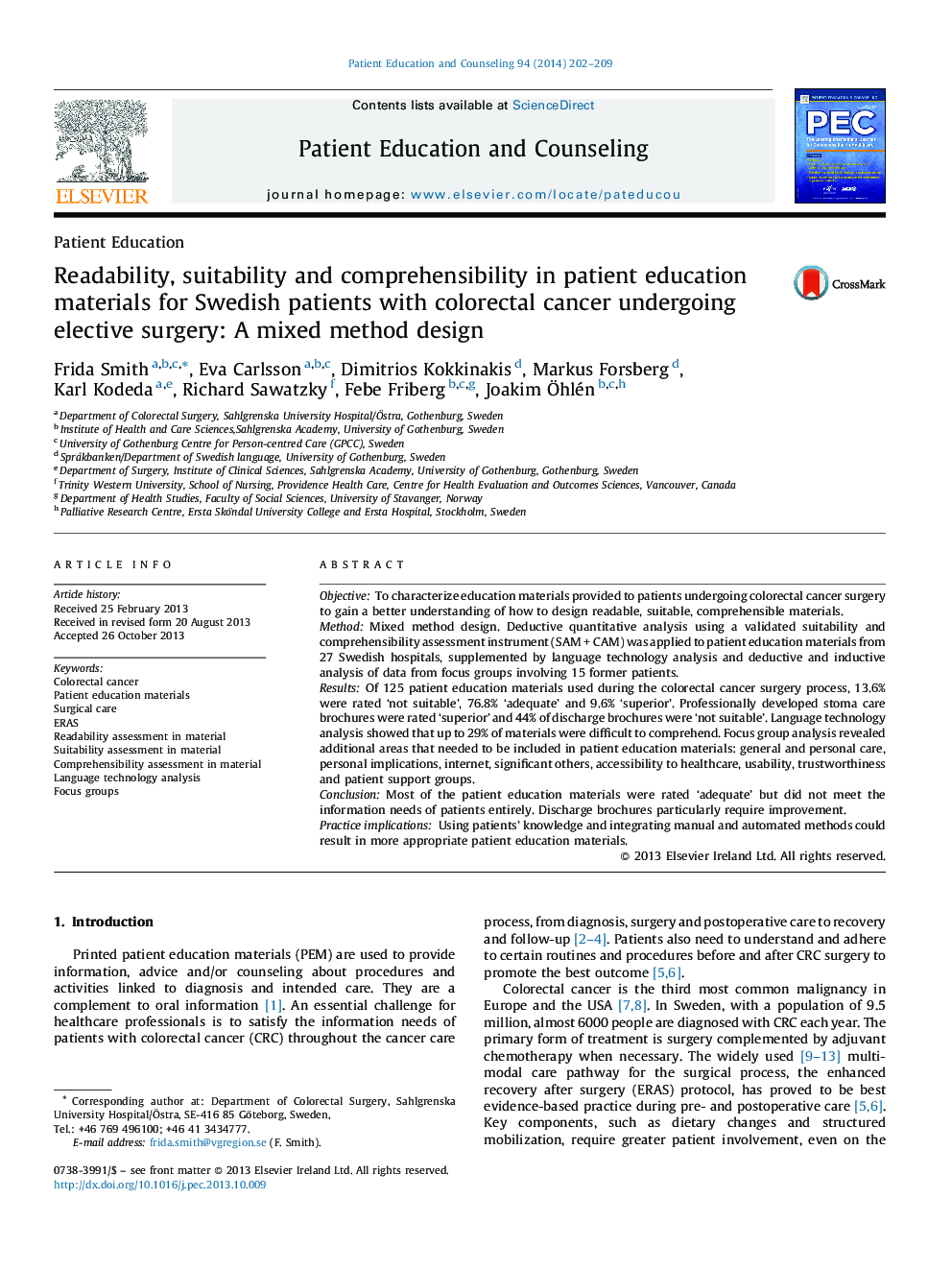| Article ID | Journal | Published Year | Pages | File Type |
|---|---|---|---|---|
| 3813873 | Patient Education and Counseling | 2014 | 8 Pages |
ObjectiveTo characterize education materials provided to patients undergoing colorectal cancer surgery to gain a better understanding of how to design readable, suitable, comprehensible materials.MethodMixed method design. Deductive quantitative analysis using a validated suitability and comprehensibility assessment instrument (SAM + CAM) was applied to patient education materials from 27 Swedish hospitals, supplemented by language technology analysis and deductive and inductive analysis of data from focus groups involving 15 former patients.ResultsOf 125 patient education materials used during the colorectal cancer surgery process, 13.6% were rated ‘not suitable’, 76.8% ‘adequate’ and 9.6% ‘superior’. Professionally developed stoma care brochures were rated ‘superior’ and 44% of discharge brochures were ‘not suitable’. Language technology analysis showed that up to 29% of materials were difficult to comprehend. Focus group analysis revealed additional areas that needed to be included in patient education materials: general and personal care, personal implications, internet, significant others, accessibility to healthcare, usability, trustworthiness and patient support groups.ConclusionMost of the patient education materials were rated ‘adequate’ but did not meet the information needs of patients entirely. Discharge brochures particularly require improvement.Practice implicationsUsing patients’ knowledge and integrating manual and automated methods could result in more appropriate patient education materials.
